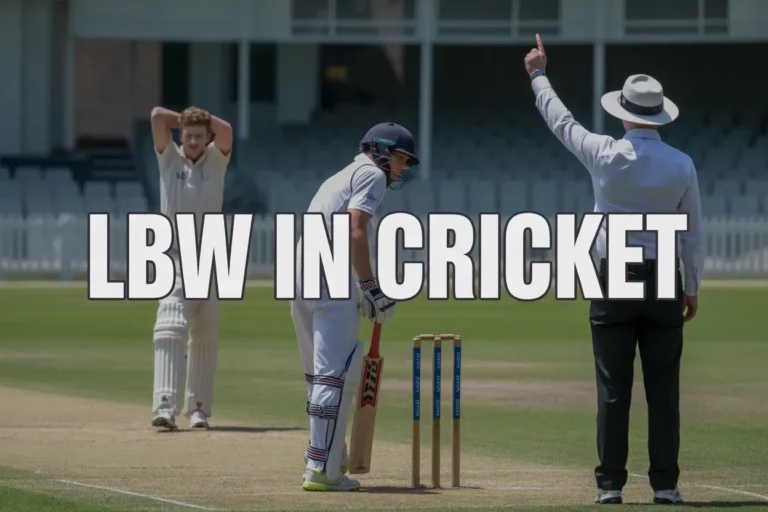How Cricket Started: A Look Back in Time

Table of Contents
Cricket is a timeless sport with a captivating history that stretches back hundreds of years. Its roots lie in simple playground games, but over centuries cricket has transformed into one of the world’s most popular sports, loved and followed by millions globally. To truly appreciate this incredible evolution, it’s important to explore the history of cricket — how it started, developed, and became the game we revere today.
The Early Origins: Folk Cricket in Medieval England
The origins of cricket date back to Medieval England, likely emerging during the 13th to 16th centuries in the southeast region known as the Weald. This wooded, rural area covering parts of Kent and Sussex provided the perfect setting for the early forms of cricket. Initially, it was a countryside pastime mostly played by children, using rudimentary equipment: a ball, a stick or crook, and wickets made from natural objects like tree stumps or sheep gates.
The term “cricket” might stem from Middle Dutch “krick” or Old English “cricc,” both meaning a stick or staff, referencing the equipment used in gameplay. The 16th-century parish records in Sussex and Surrey reference youths playing a game resembling cricket with a curved bat and ball, marking the game’s early emergence as a recognized activity.
Cricket in the 17th and Early 18th Centuries: From Village Pastime to Adult Sport
The late 1500s and early 1600s provide the first firm documentary evidence of cricket. In 1597, a court case in Guildford mentioned “creckett” played by boys, while by 1611, adult participation was noted in the same region. Throughout the 17th century, cricket grew beyond village fields, with local communities and parishes organizing matches between teams.
By the early 18th century, cricket became more structured. The first inter-county matches like Kent vs. Surrey were documented around 1709. The famous Hambledon Club in Hampshire, founded around the 1760s, played a pivotal role in elevating cricket’s status, promoting higher skill standards and attracting aristocratic patrons.
Significant changes appeared in equipment and technique. The cricket bat evolved from a curved, hockey-stick shape to a straight blade by the mid-18th century, adapting to new bowling methods where balls were pitched rather than rolled.
Codification and the Rise of Formal Cricket: Laws and the MCC
The mid-18th century saw the formalization of cricket rules. In 1744, the first known version of the Laws of Cricket was established, standardizing the pitch length at 22 yards and laying foundations for fair play.
The formation of the Marylebone Cricket Club (MCC) in London in 1787 marked a historic milestone. MCC became the custodian of the Laws of Cricket, and through its influence, the sport gained consistency and widespread governance. The MCC’s role in revising and enforcing the laws ensured cricket’s sustained development and helped standardize gameplay during the 18th and 19th centuries.
The 18th to early 19th centuries also introduced cricket’s first official competitions and records, with notable players like John Nyren and W.G. Grace shaping the sport’s narrative with their performances and writings. The significance of the sport increased, leading to the establishment of grounds like Lord’s Cricket Ground, often called the “Home of Cricket”.
Cricket’s Expansion: From England to the World
As the British Empire grew, cricket expanded with it, becoming a symbol of British culture and influence worldwide. By the 19th century, cricket had taken root in Australia, India, the Caribbean, South Africa, and more.
A landmark in international cricket history was the first official international match between the United States and Canada in 1844. Australia soon emerged as a cricketing powerhouse, and in 1877, the first Test match between England and Australia at the Melbourne Cricket Ground established Test cricket, the highest form of the sport, which persists today.
The sport’s spread was facilitated by British soldiers, colonists, and expatriates, embedding cricket deeply into the social fabric of many countries and turning it into a vehicle for identity and pride among colonial populations.
Key Milestones and Innovations in Cricket History
Cricket has witnessed numerous landmark events and milestones that define its rich history:
- 1774: The introduction of the Leg Before Wicket (LBW) rule, one of cricket’s fundamental dismissal methods.
- 1787: MCC founded; the same year Thomas Lord opened his original ground in Marylebone.
- 1845: The Oval, London, opened, becoming a key venue for first-class cricket.
- 1864: The legalization of overarm bowling, revolutionizing bowling techniques.
- 1890: The establishment of the official County Championship in England, formalizing domestic competition.
- 1932-33: The infamous Bodyline series, illustrating cricket’s tactical evolution and controversies.
- 1971: The introduction of One-Day Internationals (ODIs), marking a new era with limited-overs cricket.
- 2003: The beginning of T20 cricket, further expanding cricket’s popularity with fast-paced formats.
Cricket Today: A Global Sport Rooted in Tradition
Today, cricket thrives with a diversity of formats ranging from Test matches lasting five days to T20 games completed in a few hours. The sport continues its global appeal with the International Cricket Council (ICC) overseeing competitions involving cricketing nations worldwide.
Cricket’s history is rich with tradition, innovation, and cultural significance. Its journey from rural English villages to multi-format professional international arenas stands as a testimony to how a simple game can unite millions across continents.



One Comment